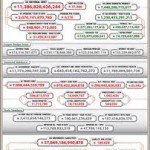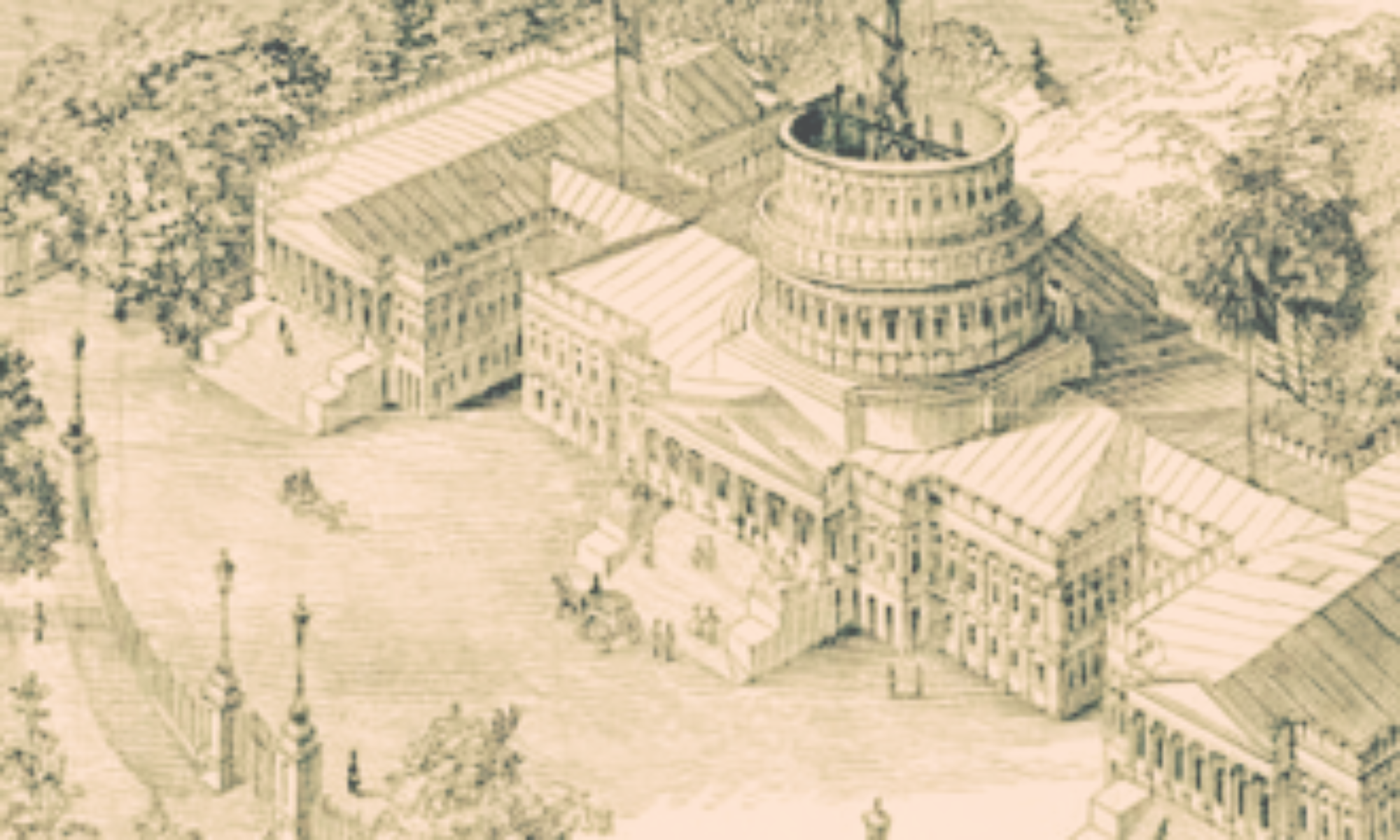
If you take a few steps back from the drama, recrimination and uncertainty of the debt ceiling talks, the most striking feature of the debate goes largely unmentioned.
Since January, there has been an unprecedented shift in the language of politics that has moved decisively in the conservative direction.
As George Will points out in his column today, 2011 began with President Obama proposing a budget that increased debt over the next decade. That budget was voted down by the Senate – 97-0 – in May.
A subsequent, hastily assembled, alternate Obama budget blueprint, designed to regain the initiative in the budget talks has all but been forgotten.
In May, the President called for a “clean” debt ceiling increase – meaning a bill untethered from any future spending restraint.
Today, as debt ceiling plans proliferate like mushrooms in the dark, it is clear that the President is now prepared to accept dramatic spending cuts, and structural changes to sacrosanct entitlements that will slow their future growth.
For a progressive Democrat who has governed in the traditions of the most liberal President in post-WWII American history, the change is nothing short of extraordinary.
A shout out here to the Tea Party.
Demonized, insulted and mocked by Democrats and the Mainstream Media as little more than a rabble of redneck simpletons, the Tea Party was, in fact, the most decisive element in politics in 2010, and in GOP gains across the country, in an election that represented a historic policy rebuke to the President and Democrats.
But far from fading away after the intensity of 2010, Tea Party ideas are the political pivot point from which all debt reduction proposals originate today.
That seismic shift in the national conversation is a historic achievement in its own right, worthy of recognition.
So now what?
Based on the proposals floating around, Republicans have three, basic choices:
Unconditional Victory: this woul be represented by the Tea Party-hyped “Cut, Cap & Balance” proposal.
Just passed in the House, the legislation would tie a rise in the debt ceiling to a very strict balanced budget amendment to the Constitution. If you want to understand the wellsprings of the Tea Party, here it is, distilled into a document and a process.
But the amendment is an all-out ideological assault on the Democratic view of government. For the amendment to pass, the Democrats might as well pull up stakes, cede the playing field and go home. For that reason, you don’t have to be an oracle to know that this has no political chance whatsoever, at least in its current form.
And thus while tying one’s position to the debt ceiling to this approach may feel satisfying personally, it has less practical effect than Don Quixote chasing windmills. At this point, it serves no constructive political purpose but to posture. And for public servants of integrity, posturing is neither leadership nor constructive problem solving.
Policy Over Politics: this is Speaker John Boehner. Boehner wants a deal, a big deal. No small ball for this Speaker.
He wants to tackle spending cuts, restructure entitlements and reform the tax code all in one, massive stroke ito put America’s financial house in order, and raise the debt ceiling.
On paper, this is a realistic, pro-growth path and a credible deficit reduction plan.
For Republicans who have not become “Quistlings” (Grover Norquist lemmings), this is a near ideal outcome that preserves the solvency of entitlements for decades while eliminating distortions in the tax code for lower corporate and individual tax rates, that will spur economic growth. Tea Party Republicans would eventually see through the fog that this deal is as a sizable policy triumph.
And as of this morning – it changes hourly – this was apparently tantalizingly close to the center point for a deal with the President.
The problem here is that if the Republicans and Obama actually cut the deal as outlined, congressional Republicans will have effectively sold out the Republican presidential slate.
The President’s rich and varied record of economic mismanagement is made virtually bullet-proof by an agreement that blunts almost all the charges against him as a profligate, big government spender at war with private sector economic growth. The Republican field – and the nominee, will be left to either fight over the past or go right to stake out fresh territory, further marginalizing the candidate. Obama wins under both cases.
And there is congressional Republican history in cutting policy deals at the expense of politics and presidential candidates.
In 1996, Newt Gingrich inked far reaching welfare reform with President Clinton. While it infuriated Clinton’s base, the deal positioned Clinton as a bipartisan centrist and denied Bob Dole, the GOP nominee, of key criticism of the his opponent.
The central uncertainty in this approach is what a second Obama term would look like. Which Obama would show up? The inner centrist clothed in liberal garb, or the grounded progressive who did what was necessary to win re-election?
Also, despite the outrage a Boehner-Obama deal would create among the Democratic wing of the Democratic Party, stone cold political calculations would show that many of the most vulnerable Democrats in the Senate would benefit by voting for the big deal. 23 Democrats are up in 2012. Republicans only need a net of 4 to be in charge.
Ironically, a budget a deal that is an anathema to Democratic interests is probably the best insurance for vulnerable Democratic incumbents.
But cutting the deal is only the first, and improbably, the easiest piece in a comprehensive settlement on government spending and taxes. Implementation is where the rubber meets the road, and with President Obama in the White House, there is no certainty that the deal cut in 2011 will survive by 2014, no matter what the composition of Congress looks like.
So as tempting as the Boehner plan is, it wins the battle but not the war.
“Clear, Hold & Build”: this is best understood as Mitch McConnell’s strategy. Of all the players on the Republican side, McConnell has been the most strategic in framing the Republican position in terms of a favorable political alignment for conservative ideas.
McConnell understands that a deal, especially a deal that is most favorable to the Republican position, is a longer term loser as it will fortify President Obama’s re-election and help endangered Democratic incumbents whose defeat is essential to McConnell retaking the majority.
The McConnell plan sees today’s events around the debt ceiling as tactical, with the strategic win coming in November 2012, and that all efforts should sensibly be focused on it.
To that end, McConnell has authored an unorthodox but savvy political plan that shifts responsibility to lift the debt ceiling to the President, in three tranches before November 2012, leaving Congress to vote the President’s request up or down.
This provides political cover to Republicans who do not want to raise the ceiling, and forces Democrats to embrace Obama’s spending plans or spending cuts that he may propose. Republicans don’t get an immediate, dollar for dollar cut in the debt, or perhaps, even any meaningful cuts at all, but it is only for another sixteen months.
The debt ceiling gets raised, soothing markets. President Obama remains stuck with the consequences of his economic policies, while he has no armor against GOP charges of prolific spending, appalling government growth and intervention, and stifling the private sector job creation.
In November 2012, the public gets to choose between two crystal clear versions of government.
If economic performance realizes current predictions, the result would include a Republican Senate and President. At that point, the GOP could create, present, approve and implement the fundamental structural changes necessary to reign in our debt, preserve entitlements and get the economy growing again, unencumbered by the chameleon nature of President Obama.
The Boehner path is the best choice now. In investor terms, it locks in the best rates available today at the expense of the future.
The McConnell plan is the best choice for the longer haul. It is riskier, but the potential payoff in less than a year and a half provides the best chance to see Republican reforms through to their logical, growth-enhancing, debt-reducing impact, which is honestly what the political revolution in 2010 was all about.
Oh, and there’s always default.
But I’ve already covered that….

Thanks Chris! For a lay person such as myself , you’ve really opened my eyes to the big picture. I don’t have tunnel vision in all of this, but it gets confusing trying to understand all the ramifications of the wrong deal. I don’t want a short term gain for the biggest loss imaginable.
Mo: glad you liked the posts, and good to know there are dedicated folks all over the place that are paying attention and will hold elected reps to account.
–C2
Thanks for sharing. What a pleausre to read!
Pleasure is mine. Please come back often.
Many thanks for visiting and commenting. Please come back again.